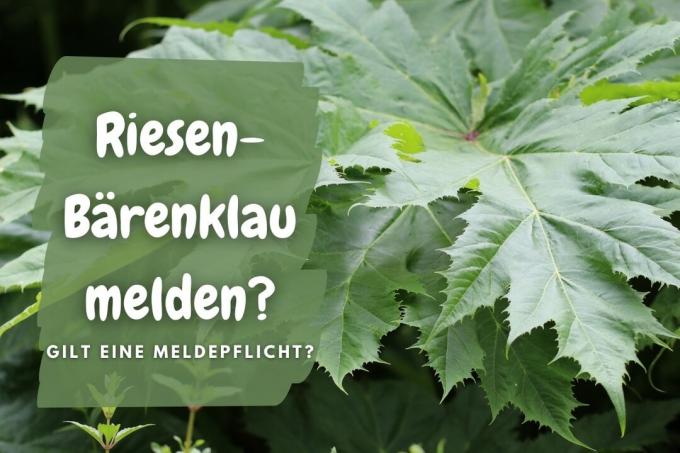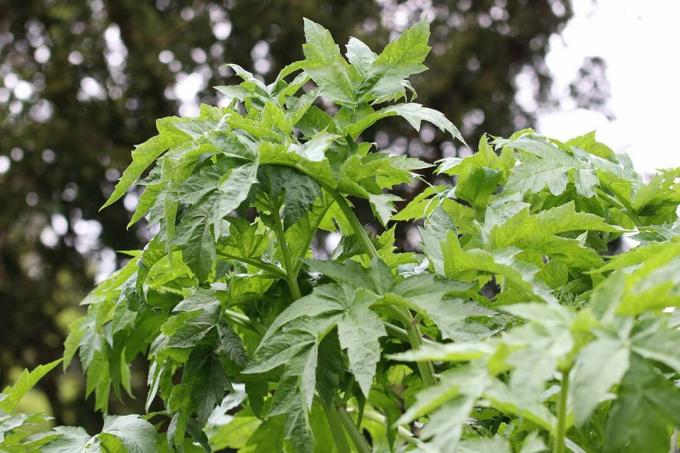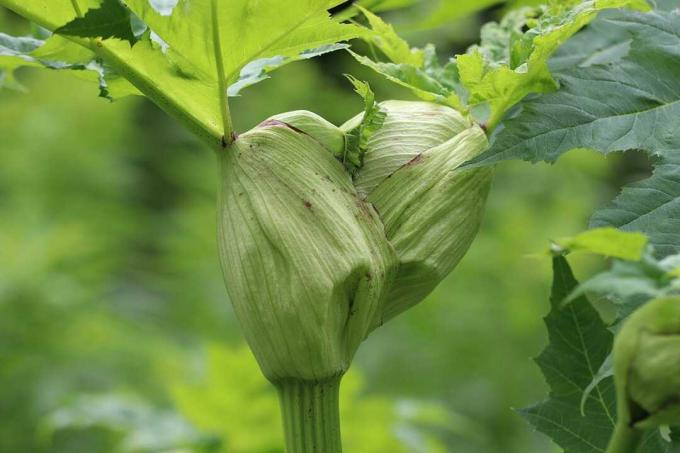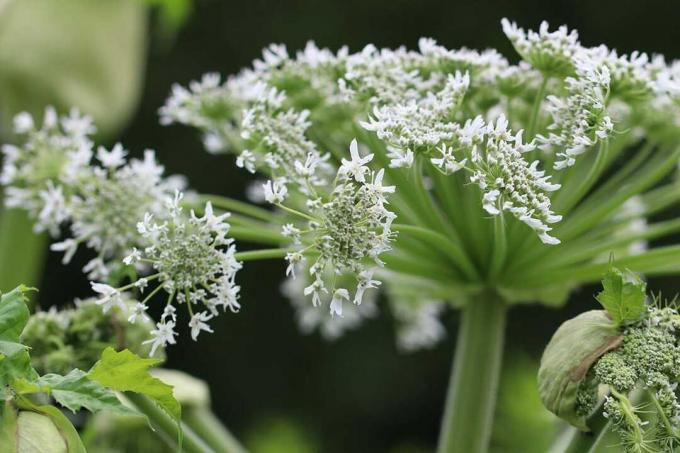
table of contents
- Occurrence
- Species delimitation
- Hazard potential
- Public spaces
- Giant hogweed on private property
- frequently asked Questions
Information about the obligation to report giant hogweed is circulating, especially on the Internet. The giant hogweed is a dangerous one Plant showing phototoxic reactions caused. There is no obligation to report giant hogweed.
In a nutshell
- Occurrence: in damp areas
- phototoxic reaction on contact with the sap
- there is no Reporting requirement
- In the event of sightings in public spaces, it is advisable to notify the responsible municipality
- on private property you have to take care of removing the plants yourself
Occurrence
The giant hogweed (Heracleum mantegazzianum) grows in sunny to partially shaded locations. The giant hogweed can get very tall, especially in partial shade, as it literally grows towards the sun. The soil should always be moderately moist.

The giant hogweed can often be found in the following places:
- Stream / river bank
- lakeside
- moderately humid swamp areas
- moderately moist trenches
Species delimitation
There are a few other hogweed species in Central Europe. The most common species is the meadow hogweed (Heracleum sphondylium), which is native, as well as the Austrian hogweed (Heracleum austriacum). This occurs not only in Austria, but can also be found in Germany, especially in the southern federal states.
Distinguishing features of the giant hogweed:
- reddish spots on the stem
- The stem has hardly any or no angular grooves
- The stem is barely to slightly bristly haired

Note: Occasionally, other hogweed species may also have reddish spots. It has not yet been fully clarified whether this is a crossbreed or the formation of anthocyanins as sun protection.
Hazard potential
The giant hogweed has a very high concentration of so-called furanocoumarins. This ingredient on the skin in combination with UV radiation triggers a phototoxic reaction that looks like a burn.
Not only the giant hogweed can cause a phototoxic reaction, the ingredient is present in all umbelliferous plants in more or less high concentrations. Sensitive people can also react with dermatitis when they come into contact with the sap of other hogweed species.
On very hot days, you shouldn't stand under a giant hogweed either. When it is very hot, it secretes essential oils through the leaves, which can cause allergic reactions in sensitive people, for example in the form of shortness of breath.
Public spaces
There is no official reporting requirement for the giant hogweed. If you discover a plant in public places, it is however advisable to report the giant hogweed to the local municipality, for example to the environmental agency. It can happen that children or dogs get seriously injured when they come into contact with the plants.

In public spaces, the municipalities usually take care of the disposal of the plants. This must be done by professionals. A protective suit must be worn for removal and the feet, hands, eyes or face must be completely covered. This prevents the sap from getting on the skin.
The plants and their roots must be removed. So that the giant hogweed does not reappear, a herbicide is occasionally applied on the spot.
Giant hogweed on private property
Because it no There is an obligation to report giant hogweed, you don't have to do it on private property either. If you want to get rid of the giant hogweed on your property, you should also leave the disposal to a professional. Occasionally you can contact the local fire brigade, who will do this for a donation.
As a rule, however, the disposal of the giant hogweed is chargeable. Therefore, you should remove the plants the first time they appear. The seeds can survive in the soil for over 100 years. Young plants can usually be removed completely from the soil without any risk.
Removal Tips:
- Put the garbage bag over the plant
- Cover skin
- wear safety glasses
- Expose the root deeply
- then cover the soil with weed film
frequently asked Questions
Immediately wash the area with water, then cover. In the event of extensive contact with the giant hogweed, you should consult a doctor immediately.
Put the excavated giant hogweed in a garbage bag and dispose of it in the general waste.
On average, the giant hogweed is up to three meters high. However, there were a few specimens that were more than 3.5 meters high.


